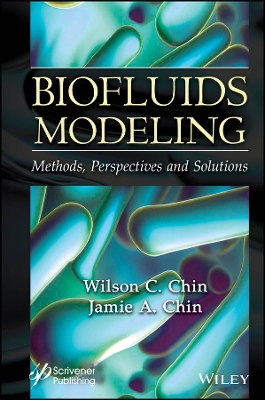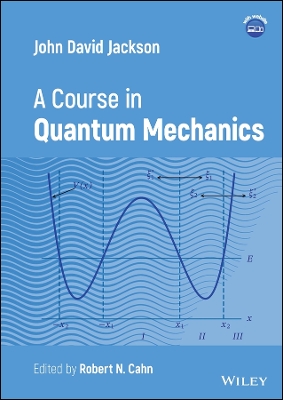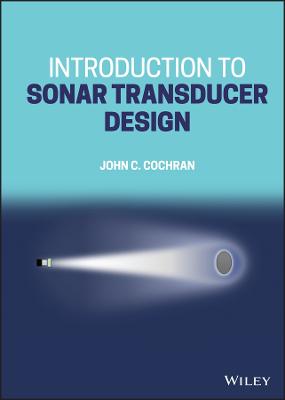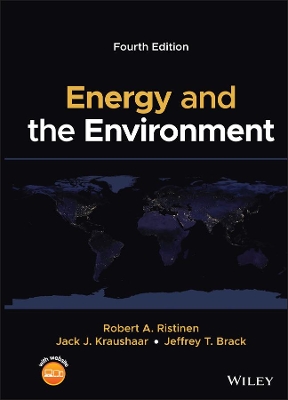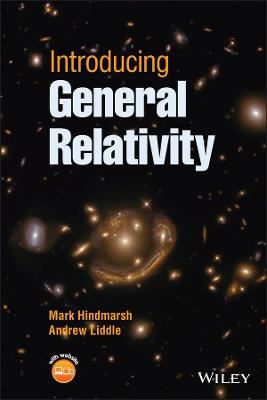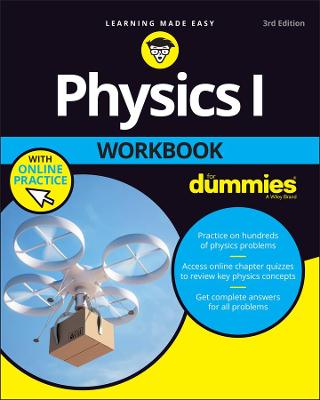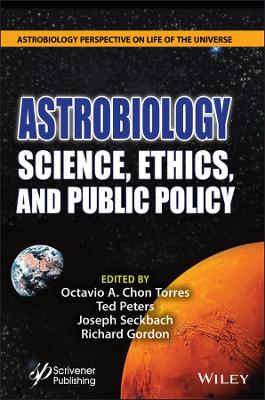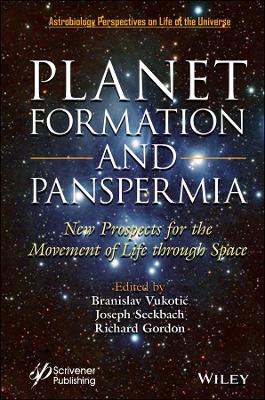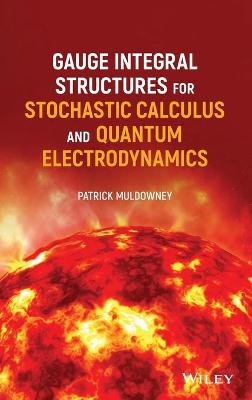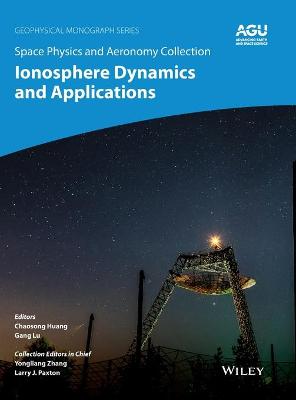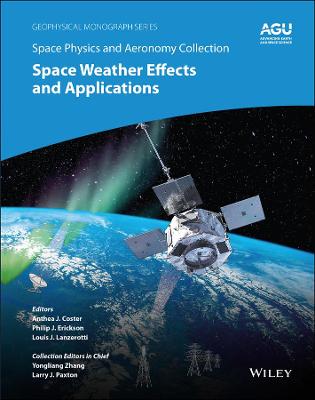Liquid Crystals
 -10%
portes grátis
-10%
portes grátis
Liquid Crystals
Khoo, Iam-Choon
John Wiley & Sons Inc
01/2022
416
Dura
Inglês
9781119705826
15 a 20 dias
732
Chapter 1. Introduction to Liquid Crystals 1
1.1. Molecular Structures and Chemical Compositions 1
1.2. Optical Properties 3
1.2.1. Electronic Optical Transitions and UV Absorption 3
1.2.2. Visible and Infrared Absorption; Terahertz, Microwave 4
1.3. Lyotropic, Polymeric, and Thermotropic Liquid Crystals 6
1.3.1. Lyotropic Liquid Crystals 6
1.3.2. Polymeric Liquid Crystals 7
1.3.3. Thermotropic Liquid Crystals: Smectic, Nematic, Cholesteric, and Blue-phase Liquid Crystals 8
1.3.4. Functionalized and Discotic Liquid Crystals 11
1.4. Mixtures, Polymer-dispersed, and Dye-doped Liquid Crystals 11
1.4.1. Mixtures 12
1.4.2. Dye-doped Liquid Crystals 14
1.4.3. Polymer-dispersed and Polymer-stabilized Liquid Crystals 14
1.5. Liquid Crystal Cells Fabrication 16
1.5.1. Nematic LC Cells Assembly 16
1.5.2. Cholesteric Liquid Crystal Cell Assembly 18
1.5.3. Blue-phase Liquid Crystal Cell Assembly 20
1.5.4. Photosensitive and Tunable Optical Waveguide, Photonic Crystals, and Metamaterial Nanostructures 22
1.5.5. Isotropic Liquid Crystal Cored Fiber Array 24
References 25
Chapter 2. Order Parameter, Phase Transition, and Free Energies 29
2.1. Basic Concepts 29
2.1.1. Introduction 29
2.1.2. Scalar and Tensor Order Parameters 30
2.1.3. Long- and Short-range Order 32
2.2. Molecular Interactions and Phase Transitions 33
2.3. Molecular Theories and Results for the Liquid Crystalline Phase 34
2.3.1. Maier-Saupe Theory: Order Parameter Near Tc 34
2.3.2. Nonequilibrium and Dynamical Dependence of the Order Parameter 36
2.4. Isotropic Phase of Liquid Crystals 39
2.4.1. Free Energy and Phase Transition 40
2.4.2. Free Energy in the Presence of an Applied Field 41
References 43
Chapter 3. Nematic Liquid Crystals 44
3.1. Introduction 44
3.2. Elastic Continuum Theory 44
3.2.1. The Vector Field: Director Axis 44
3.2.2. Elastic Constants, Free Energies, and Molecular Fields 46
3.3. Dielectric Constants and Refractive Indices 49
3.3.1. DC and Low-frequency Dielectric Permittivity, Conductivities, and Magnetic Susceptibility 49
3.3.2. Free Energy and Torques by Electric and Magnetic Fields 52
3.4. Optical Dielectric Constants and Refractive Indices 53
3.4.1. Linear Susceptibility and Local Field Effect 53
3.4.2. Equilibrium Temperature and Order Parameter Dependences of Refractive Indices 56
3.5. Flows and Hydrodynamics 60
3.5.1. Hydrodynamics of Ordinary Isotropic Fluids 61
3.5.2. General Stress Tensor for Nematic Liquid Crystals 64
3.5.3. Flows with Fixed Director Axis Orientation 65
3.5.4. Flows with Director Axis Reorientation 66
3.6. Field-induced Director Axis Reorientation Effects 67
3.6.1. Field-induced Reorientation Without Flow Coupling: Freedericksz Transition 68
3.6.2. Reorientation with Flow Coupling 70
References 72
Chapter 4. Cholesteric, Smectic, and Ferroelectric Liquid Crystals 73
4.1. Cholesteric Liquid Crystals 73
4.1.1. Free Energies 73
4.1.2. Field-induced Effects and Dynamics 75
4.1.3. Twist and Conic Mode Relaxation Times 78
4.2. Optical Properties of Cholesterics 79
4.2.1. Bragg Regime (Optical Wavelength Pitch) 79
4.2.2. Reflection and Transmission of Polarized Light: Normal Incidence 79
4.2.3. Cholesteric Liquid Crystal as a One-dimensional Photonic Crystal, Photonic Bandgap, and Dispersion 84
4.2.4. Cholesteric Liquid Crystals with Magneto-optic Activity: Negative Index of Refraction 89
4.2.5. Polarization Rotation and Switching by High Period Number CLC - Adiabatic Rotation and Circular Bragg Resonance 90
4.3. Cholesteric Blue Phase Liquid Crystals 97
4.3.1. Free Energies and Equation of Motion under an Applied Field 97
4.3.2. Field-induced Lattice Distortion and New Crystalline Structures 98
4.3.3. Polymer-stabilization and Electro-optical Properties of Non-cubic BPLC 99
4.4. Smectic and Ferroelectric Liquid Crystals: A Brief Survey 100
4.4.1. Smectic-A Liquid Crystals 101
4.4.2. Smectic-C Liquid Crystals 104
4.4.3. Smectic-C? and Ferroelectric Liquid Crystals 106
4.4.4. Smectic-C? - Smectic-A Phase Transition 111
References 113
Chapter 5. Light Scattering 115
5.1. Introduction 115
5.2. Electromagnetic Formalism of Light Scattering in Liquid Crystals 115
5.3. Scattering From Director Axis Fluctuations in Nematic Liquid Crystals 118
5.4. Light Scattering in the Isotropic Phase of Liquid Crystals 122
5.5. Temperature, Wavelength, and Cell Geometry Effects on Scattering 125
5.6. Spectrum of Light and Orientation Fluctuation Dynamics 127
5.7. Raman Scatterings 129
5.7.1. Introduction 129
5.7.2. Quantum Theory of Spontaneous and Stimulated Raman Scattering: Scattering Cross-section 130
5.7.3. Spontaneous Raman Scattering 132
5.7.4. Stimulated Raman Scattering 132
5.8. Brillouin and Rayleigh Scatterings 133
5.8.1. Brillouin Scattering 135
5.8.2. Rayleigh Scattering 137
5.9. A Brief Introduction to Nonlinear Light Scattering 138
References 140
Chapter 6. Liquid Crystals Optics and Electro-optics 142
6.1. Introduction 142
6.2. Review of Electro-Optics of Anisotropic and Birefringent Crystals 143
6.2.1. Anisotropic, Uniaxial and Biaxial Optical Crystals 143
6.2.2. Index Ellipsoid in the Presence of an Electric Field-Electro-optics Effect 145
6.2.3. Polarizers and Retardation Plate 146
6.2.4. Basic Electro-optics Modulation 148
6.3. Electro-Optics of Nematic Liquid Crystals 149
6.3.1. Director Axis Reorientation in Homeotropic and Planar Cell; Dual Frequency Liquid Crystals 149
6.3.2. Freedericksz Transition Revisited 151
6.3.3. Field-induced Refractive Index Change and Phase Shift 154
6.4. Nematic Liquid Crystal Switches for Display Application 156
6.4.1. Liquid Crystal Switch - on Axis Consideration for Twist, Planar, and Homeotropic Aligned Cells 156
6.4.2. Off-axis Transmission, Viewing Angle, and Birefringence Compensation 157
6.4.3. Liquid Crystal Display Electronics 159
6.5. Electro-Optical Effects in Other Phases of Liquid Crystals 159
6.5.1. Surface Stabilized FLC 160
6.5.2. Soft-mode FLCs 161
6.6. Non-Display Applications of Liquid Crystals 163
6.6.1. Liquid Crystal Spatial Light Modulator 164
6.6.2. Tunable Photonic Crystals with Liquid Crystal Infiltrated Nanostructures 165
6.6.3. Tunable Frequency Selective Structures, Metamaterial, and Metasurfaces 167
6.6.4. Liquid Crystals for Molecular Sensing and Detection 168
6.6.5. Beam Steering, Routing, and Tunable Micro-ring Resonator, and High-power Laser Optics 170
References 171
Chapter 7. Optical Propagation in Anisotropic Materials 175
7.1. Electromagnetic Formalisms for Optical Propagation 175
7.1.1. Maxwell Equations and Wave Equations in Anisotropic Media 176
7.1.2. Complex Refractive Index - Real and Imaginary Components 177
7.1.3. Negative Index Material 178
7.1.4. Normal Modes, Power Flow and Propagation Vectors in a Lossless Isotropic Medium 179
7.1.5. Normal Modes and Propagation Vectors in a Lossless Anisotropic Medium 181
7.2. Polarized Light Propagation in Liquid Crystal Display Panel 185
7.2.1. Pane Polarized Wave and Jones Vectors 185
7.2.2. Jones Matrix Method 189
7.2.3. Oblique Incidence - 4 x 4 Matrix Methods 191
7.3. Extended Jones Matrix Method 193
7.4. Finite-difference Time-domain technique 196
7.5. Nonlinear Light Propagation in Liquid Crystals - a First Look 197
7.6. Systems of Units 198
References 200
Chapter 8. Laser-induced Reorientation Nonlinear Optical Effects 203
8.1. Introduction 203
8.2. Laser-Induced Molecular Reorientations in the Isotropic Phase 204
8.2.1. Individual Molecular Reorientations in Anisotropic Liquids 204
8.2.2. Correlated Molecular Reorientation Dynamics 207
8.2.3. Influence of Molecular Structure on Isotropic Phase Reorientation Nonlinearities 210
8.3. Molecular Reorientations in the Nematic Phase 212
8.3.1. Simplified Treatment of Optical Field-induced Director Axis Reorientation 213
8.3.2. More Exact Treatment of Optical Field-induced Director Axis Reorientation 215
8.3.3. Nonlocal Director Axis Reorientation and Nonlocal Optical Nonlinearity 217
8.4. Nematic Phase Reorientation Dynamics 219
8.4.1. Plane Wave Optical Field 219
8.4.2. Sinusoidal Optical Intensity 222
8.4.3. Polarization Grating with Uniform Optical Intensity 224
8.5. Laser-Induced Director Axis Realignment in Dye-Doped Liquid Crystals 225
8.5.1. Reorientation Caused by Inter-Molecular Torque 225
8.5.2. Laser-induced Trans-Cis Isomerism in Dye-doped Liquid Crystals 226
8.6. DC Field Aided Optically Induced Nonlinear Optical Effects in Liquid Crystals - Photorefractivity 226
8.6.1. Orientation Photorefractivity - Bulk Effects 229
8.6.2. Experimental Results and Surface Charge/Field Contribution 233
8.7. Reorientation in Other Phases of Pristine (Undoped) Liquid Crystals 234
8.7.1. Smectic Phase 234
8.7.2. Cholesteric and Blue-phase Liquid Crystals 235
References 236
Chapter 9. Thermal, Density, Lattice Distortion Optical Nonlinearities in Nematic, Cholesteric, and Blue-phase Liquid Crystals 241
9.1. Introduction 241
9.2. Electrostriction and Flows in Non-Absorbing Liquid Crystals -a General Overview 242
9.3. Laser-Induced Density and Temperature Modulations in Liquid Crystals 245
9.3.1. Modulations by Sinusoidal Optical Intensity 247
9.3.2. Refractive Index Changes: Temperature and Density Effects 250
9.4. Optical Nonlinearities of Nematic Liquid Crystals 254
9.4.1. Steady-State Thermal Nonlinearity of Nematic Liquid Crystals 256
9.4.2. Short Laser Pulse-induced Thermal Index Change in Nematics and Near-Tc Effect 257
9.4.3. Optical Nonlinearities of Isotropic Liquid Crystals 258
9.5. Coupled Nonlinear Optical Effects in Nematic Liquid Crystals 260
9.5.1. Thermal Orientation Coupling Effect 261
9.5.2. Flow-reorientation Effect 262
9.6. Nonlinear Optical Responses of Cholesteric Blue-Phase Liquid Crystals 266
9.6.1. General Overview 266
9.6.2. Non-electronics Optical Nonlinearities of BPLC 268
References 272
Chapter 10. Electronic Optical Nonlinearities 275
10.1. Introduction to Quantum Mechanical Treatment of Molecules 275
10.2. Density Matrix Formalism for Optical Induced Molecular Electronic Polarizabilities 278
10.2.1. Field-induced Polarizations - First and Higher Orders 280
10.2.2. Linear and Nonlinear Absorptions 280
10.3. Linear and Nonlinear Electronic Susceptibilities 282
10.3.1. Linear Optical Polarizabilities of a Molecule 282
10.3.2. Complex Susceptibilities and Index of Refraction -Dispersion, Absorption, and Amplification of Light, Lasers 286
10.3.3. Second-order Electronic Polarizabilities 289
10.3.4. Third-order Electronic Polarizabilities 290
10.3.5. Local Field Effects and Symmetry 292
10.3.6. Symmetry Considerations 293
10.3.7. Permanent Dipole and Molecular Ordering 294
10.3.8. Quadrupole Contribution and Field-induced Symmetry Breaking 295
10.3.9. Influence of Molecular Structures 295
10.4. Intensity-Dependent Refractive Index Change and nonlinear Absorption 296
10.4.1. Nonlinear Absorption 298
References 300
Chapter 11. Nonlinear Optics 302
11.1. Introduction 302
11.1.1. General Nonlinear Polarization and Susceptibility 302
11.1.2. Convention and Symmetry 304
11.2. Coupled Maxwell Wave Equations 308
11.3. Nonlinear Optical Phenomena 310
11.3.1. Stationary Degenerate Optical Wave Mixing 310
11.3.2. Optical Phase Conjugation 314
11.3.3. Transient and Nearly Degenerate Wave Mixing 316
11.3.4. Nondegenerate Optical Wave Mixing; Harmonic Generations 320
11.3.5. Stationary Self-phase Modulation and Self-action 323
11.4. Stimulated Scatterings 328
11.4.1. Stimulated Raman Scatterings 329
11.4.2. Stimulated Brillouin Scatterings 332
11.4.3. Stimulated Orientation Scattering in Liquid Crystals 336
11.4.4. Stimulated Thermal Scattering 341
11.5. Ultrafast Laser Pulse Self-Action Effects in Cholesteric Liquid Crystals 342
11.5.1. Coupled Wave Equations for Forward and Backward Propagating Waves 342
11.5.2. Ultrafast Pulse Modulations - Compression, Stretching, and Recompression with Cholesteric Liquid Crystals 344
References 345
Chapter 12. Nonlinear Optical Processes Observed in Liquid Crystals 348
12.1. Self-Action Nonlinear Optical Processes 348
12.1.1. Self-induced Spatial and Temporal Phase Shift 348
12.1.2. Self-phase Modulation, Self-focusing, -defocusing of Continuous-Wave (CW) or Pulsed Laser 349
12.1.3. Self-guiding, Spatial Soliton and Pattern Formation 353
12.1.4. Pulse Modulations, Polarization Rotation of and Switching by Ultrafast (Picosecond-Femtoseconds) Laser 355
12.2. Optical Wave Mixings 358
12.2.1. Stimulated Orientational Scattering and Polarization Self-switching-Steady State 358
12.2.2. Stimulated Orientational Scattering - Nonlinear Dynamics 361
12.2.3. Optical Phase Conjugation with Orientation and Thermal Gratings 363
12.2.4. Self-starting Optical Phase Conjugation 365
12.3. Liquid Crystals for All-Optical Image Processing 369
12.3.1. Liquid Crystals as All-optical Information Processing Materials 369
12.3.2. All-optical Image Processing 371
12.3.3. Intelligent Optical Processing 372
12.4. Harmonic Generations and Sum-Frequency Spectroscopy 374
12.5. Optical Switching 375
12.6. Nonlinear Absorption and Optical Limiting of Lasers for Eye/Sensor Protection 379
12.6.1. Introduction 379
12.6.2. Nonlinear Fiber Array - An Intensity Dependent Spatial Frequency Filter 381
12.6.3. Optical Limiting Action of Fiber Array Containing RSA Materials 383
12.6.4. Optical Limiting Action of Fiber Array Containing TPA Materials 387
References 390
Index 398
Chapter 1. Introduction to Liquid Crystals 1
1.1. Molecular Structures and Chemical Compositions 1
1.2. Optical Properties 3
1.2.1. Electronic Optical Transitions and UV Absorption 3
1.2.2. Visible and Infrared Absorption; Terahertz, Microwave 4
1.3. Lyotropic, Polymeric, and Thermotropic Liquid Crystals 6
1.3.1. Lyotropic Liquid Crystals 6
1.3.2. Polymeric Liquid Crystals 7
1.3.3. Thermotropic Liquid Crystals: Smectic, Nematic, Cholesteric, and Blue-phase Liquid Crystals 8
1.3.4. Functionalized and Discotic Liquid Crystals 11
1.4. Mixtures, Polymer-dispersed, and Dye-doped Liquid Crystals 11
1.4.1. Mixtures 12
1.4.2. Dye-doped Liquid Crystals 14
1.4.3. Polymer-dispersed and Polymer-stabilized Liquid Crystals 14
1.5. Liquid Crystal Cells Fabrication 16
1.5.1. Nematic LC Cells Assembly 16
1.5.2. Cholesteric Liquid Crystal Cell Assembly 18
1.5.3. Blue-phase Liquid Crystal Cell Assembly 20
1.5.4. Photosensitive and Tunable Optical Waveguide, Photonic Crystals, and Metamaterial Nanostructures 22
1.5.5. Isotropic Liquid Crystal Cored Fiber Array 24
References 25
Chapter 2. Order Parameter, Phase Transition, and Free Energies 29
2.1. Basic Concepts 29
2.1.1. Introduction 29
2.1.2. Scalar and Tensor Order Parameters 30
2.1.3. Long- and Short-range Order 32
2.2. Molecular Interactions and Phase Transitions 33
2.3. Molecular Theories and Results for the Liquid Crystalline Phase 34
2.3.1. Maier-Saupe Theory: Order Parameter Near Tc 34
2.3.2. Nonequilibrium and Dynamical Dependence of the Order Parameter 36
2.4. Isotropic Phase of Liquid Crystals 39
2.4.1. Free Energy and Phase Transition 40
2.4.2. Free Energy in the Presence of an Applied Field 41
References 43
Chapter 3. Nematic Liquid Crystals 44
3.1. Introduction 44
3.2. Elastic Continuum Theory 44
3.2.1. The Vector Field: Director Axis 44
3.2.2. Elastic Constants, Free Energies, and Molecular Fields 46
3.3. Dielectric Constants and Refractive Indices 49
3.3.1. DC and Low-frequency Dielectric Permittivity, Conductivities, and Magnetic Susceptibility 49
3.3.2. Free Energy and Torques by Electric and Magnetic Fields 52
3.4. Optical Dielectric Constants and Refractive Indices 53
3.4.1. Linear Susceptibility and Local Field Effect 53
3.4.2. Equilibrium Temperature and Order Parameter Dependences of Refractive Indices 56
3.5. Flows and Hydrodynamics 60
3.5.1. Hydrodynamics of Ordinary Isotropic Fluids 61
3.5.2. General Stress Tensor for Nematic Liquid Crystals 64
3.5.3. Flows with Fixed Director Axis Orientation 65
3.5.4. Flows with Director Axis Reorientation 66
3.6. Field-induced Director Axis Reorientation Effects 67
3.6.1. Field-induced Reorientation Without Flow Coupling: Freedericksz Transition 68
3.6.2. Reorientation with Flow Coupling 70
References 72
Chapter 4. Cholesteric, Smectic, and Ferroelectric Liquid Crystals 73
4.1. Cholesteric Liquid Crystals 73
4.1.1. Free Energies 73
4.1.2. Field-induced Effects and Dynamics 75
4.1.3. Twist and Conic Mode Relaxation Times 78
4.2. Optical Properties of Cholesterics 79
4.2.1. Bragg Regime (Optical Wavelength Pitch) 79
4.2.2. Reflection and Transmission of Polarized Light: Normal Incidence 79
4.2.3. Cholesteric Liquid Crystal as a One-dimensional Photonic Crystal, Photonic Bandgap, and Dispersion 84
4.2.4. Cholesteric Liquid Crystals with Magneto-optic Activity: Negative Index of Refraction 89
4.2.5. Polarization Rotation and Switching by High Period Number CLC - Adiabatic Rotation and Circular Bragg Resonance 90
4.3. Cholesteric Blue Phase Liquid Crystals 97
4.3.1. Free Energies and Equation of Motion under an Applied Field 97
4.3.2. Field-induced Lattice Distortion and New Crystalline Structures 98
4.3.3. Polymer-stabilization and Electro-optical Properties of Non-cubic BPLC 99
4.4. Smectic and Ferroelectric Liquid Crystals: A Brief Survey 100
4.4.1. Smectic-A Liquid Crystals 101
4.4.2. Smectic-C Liquid Crystals 104
4.4.3. Smectic-C? and Ferroelectric Liquid Crystals 106
4.4.4. Smectic-C? - Smectic-A Phase Transition 111
References 113
Chapter 5. Light Scattering 115
5.1. Introduction 115
5.2. Electromagnetic Formalism of Light Scattering in Liquid Crystals 115
5.3. Scattering From Director Axis Fluctuations in Nematic Liquid Crystals 118
5.4. Light Scattering in the Isotropic Phase of Liquid Crystals 122
5.5. Temperature, Wavelength, and Cell Geometry Effects on Scattering 125
5.6. Spectrum of Light and Orientation Fluctuation Dynamics 127
5.7. Raman Scatterings 129
5.7.1. Introduction 129
5.7.2. Quantum Theory of Spontaneous and Stimulated Raman Scattering: Scattering Cross-section 130
5.7.3. Spontaneous Raman Scattering 132
5.7.4. Stimulated Raman Scattering 132
5.8. Brillouin and Rayleigh Scatterings 133
5.8.1. Brillouin Scattering 135
5.8.2. Rayleigh Scattering 137
5.9. A Brief Introduction to Nonlinear Light Scattering 138
References 140
Chapter 6. Liquid Crystals Optics and Electro-optics 142
6.1. Introduction 142
6.2. Review of Electro-Optics of Anisotropic and Birefringent Crystals 143
6.2.1. Anisotropic, Uniaxial and Biaxial Optical Crystals 143
6.2.2. Index Ellipsoid in the Presence of an Electric Field-Electro-optics Effect 145
6.2.3. Polarizers and Retardation Plate 146
6.2.4. Basic Electro-optics Modulation 148
6.3. Electro-Optics of Nematic Liquid Crystals 149
6.3.1. Director Axis Reorientation in Homeotropic and Planar Cell; Dual Frequency Liquid Crystals 149
6.3.2. Freedericksz Transition Revisited 151
6.3.3. Field-induced Refractive Index Change and Phase Shift 154
6.4. Nematic Liquid Crystal Switches for Display Application 156
6.4.1. Liquid Crystal Switch - on Axis Consideration for Twist, Planar, and Homeotropic Aligned Cells 156
6.4.2. Off-axis Transmission, Viewing Angle, and Birefringence Compensation 157
6.4.3. Liquid Crystal Display Electronics 159
6.5. Electro-Optical Effects in Other Phases of Liquid Crystals 159
6.5.1. Surface Stabilized FLC 160
6.5.2. Soft-mode FLCs 161
6.6. Non-Display Applications of Liquid Crystals 163
6.6.1. Liquid Crystal Spatial Light Modulator 164
6.6.2. Tunable Photonic Crystals with Liquid Crystal Infiltrated Nanostructures 165
6.6.3. Tunable Frequency Selective Structures, Metamaterial, and Metasurfaces 167
6.6.4. Liquid Crystals for Molecular Sensing and Detection 168
6.6.5. Beam Steering, Routing, and Tunable Micro-ring Resonator, and High-power Laser Optics 170
References 171
Chapter 7. Optical Propagation in Anisotropic Materials 175
7.1. Electromagnetic Formalisms for Optical Propagation 175
7.1.1. Maxwell Equations and Wave Equations in Anisotropic Media 176
7.1.2. Complex Refractive Index - Real and Imaginary Components 177
7.1.3. Negative Index Material 178
7.1.4. Normal Modes, Power Flow and Propagation Vectors in a Lossless Isotropic Medium 179
7.1.5. Normal Modes and Propagation Vectors in a Lossless Anisotropic Medium 181
7.2. Polarized Light Propagation in Liquid Crystal Display Panel 185
7.2.1. Pane Polarized Wave and Jones Vectors 185
7.2.2. Jones Matrix Method 189
7.2.3. Oblique Incidence - 4 x 4 Matrix Methods 191
7.3. Extended Jones Matrix Method 193
7.4. Finite-difference Time-domain technique 196
7.5. Nonlinear Light Propagation in Liquid Crystals - a First Look 197
7.6. Systems of Units 198
References 200
Chapter 8. Laser-induced Reorientation Nonlinear Optical Effects 203
8.1. Introduction 203
8.2. Laser-Induced Molecular Reorientations in the Isotropic Phase 204
8.2.1. Individual Molecular Reorientations in Anisotropic Liquids 204
8.2.2. Correlated Molecular Reorientation Dynamics 207
8.2.3. Influence of Molecular Structure on Isotropic Phase Reorientation Nonlinearities 210
8.3. Molecular Reorientations in the Nematic Phase 212
8.3.1. Simplified Treatment of Optical Field-induced Director Axis Reorientation 213
8.3.2. More Exact Treatment of Optical Field-induced Director Axis Reorientation 215
8.3.3. Nonlocal Director Axis Reorientation and Nonlocal Optical Nonlinearity 217
8.4. Nematic Phase Reorientation Dynamics 219
8.4.1. Plane Wave Optical Field 219
8.4.2. Sinusoidal Optical Intensity 222
8.4.3. Polarization Grating with Uniform Optical Intensity 224
8.5. Laser-Induced Director Axis Realignment in Dye-Doped Liquid Crystals 225
8.5.1. Reorientation Caused by Inter-Molecular Torque 225
8.5.2. Laser-induced Trans-Cis Isomerism in Dye-doped Liquid Crystals 226
8.6. DC Field Aided Optically Induced Nonlinear Optical Effects in Liquid Crystals - Photorefractivity 226
8.6.1. Orientation Photorefractivity - Bulk Effects 229
8.6.2. Experimental Results and Surface Charge/Field Contribution 233
8.7. Reorientation in Other Phases of Pristine (Undoped) Liquid Crystals 234
8.7.1. Smectic Phase 234
8.7.2. Cholesteric and Blue-phase Liquid Crystals 235
References 236
Chapter 9. Thermal, Density, Lattice Distortion Optical Nonlinearities in Nematic, Cholesteric, and Blue-phase Liquid Crystals 241
9.1. Introduction 241
9.2. Electrostriction and Flows in Non-Absorbing Liquid Crystals -a General Overview 242
9.3. Laser-Induced Density and Temperature Modulations in Liquid Crystals 245
9.3.1. Modulations by Sinusoidal Optical Intensity 247
9.3.2. Refractive Index Changes: Temperature and Density Effects 250
9.4. Optical Nonlinearities of Nematic Liquid Crystals 254
9.4.1. Steady-State Thermal Nonlinearity of Nematic Liquid Crystals 256
9.4.2. Short Laser Pulse-induced Thermal Index Change in Nematics and Near-Tc Effect 257
9.4.3. Optical Nonlinearities of Isotropic Liquid Crystals 258
9.5. Coupled Nonlinear Optical Effects in Nematic Liquid Crystals 260
9.5.1. Thermal Orientation Coupling Effect 261
9.5.2. Flow-reorientation Effect 262
9.6. Nonlinear Optical Responses of Cholesteric Blue-Phase Liquid Crystals 266
9.6.1. General Overview 266
9.6.2. Non-electronics Optical Nonlinearities of BPLC 268
References 272
Chapter 10. Electronic Optical Nonlinearities 275
10.1. Introduction to Quantum Mechanical Treatment of Molecules 275
10.2. Density Matrix Formalism for Optical Induced Molecular Electronic Polarizabilities 278
10.2.1. Field-induced Polarizations - First and Higher Orders 280
10.2.2. Linear and Nonlinear Absorptions 280
10.3. Linear and Nonlinear Electronic Susceptibilities 282
10.3.1. Linear Optical Polarizabilities of a Molecule 282
10.3.2. Complex Susceptibilities and Index of Refraction -Dispersion, Absorption, and Amplification of Light, Lasers 286
10.3.3. Second-order Electronic Polarizabilities 289
10.3.4. Third-order Electronic Polarizabilities 290
10.3.5. Local Field Effects and Symmetry 292
10.3.6. Symmetry Considerations 293
10.3.7. Permanent Dipole and Molecular Ordering 294
10.3.8. Quadrupole Contribution and Field-induced Symmetry Breaking 295
10.3.9. Influence of Molecular Structures 295
10.4. Intensity-Dependent Refractive Index Change and nonlinear Absorption 296
10.4.1. Nonlinear Absorption 298
References 300
Chapter 11. Nonlinear Optics 302
11.1. Introduction 302
11.1.1. General Nonlinear Polarization and Susceptibility 302
11.1.2. Convention and Symmetry 304
11.2. Coupled Maxwell Wave Equations 308
11.3. Nonlinear Optical Phenomena 310
11.3.1. Stationary Degenerate Optical Wave Mixing 310
11.3.2. Optical Phase Conjugation 314
11.3.3. Transient and Nearly Degenerate Wave Mixing 316
11.3.4. Nondegenerate Optical Wave Mixing; Harmonic Generations 320
11.3.5. Stationary Self-phase Modulation and Self-action 323
11.4. Stimulated Scatterings 328
11.4.1. Stimulated Raman Scatterings 329
11.4.2. Stimulated Brillouin Scatterings 332
11.4.3. Stimulated Orientation Scattering in Liquid Crystals 336
11.4.4. Stimulated Thermal Scattering 341
11.5. Ultrafast Laser Pulse Self-Action Effects in Cholesteric Liquid Crystals 342
11.5.1. Coupled Wave Equations for Forward and Backward Propagating Waves 342
11.5.2. Ultrafast Pulse Modulations - Compression, Stretching, and Recompression with Cholesteric Liquid Crystals 344
References 345
Chapter 12. Nonlinear Optical Processes Observed in Liquid Crystals 348
12.1. Self-Action Nonlinear Optical Processes 348
12.1.1. Self-induced Spatial and Temporal Phase Shift 348
12.1.2. Self-phase Modulation, Self-focusing, -defocusing of Continuous-Wave (CW) or Pulsed Laser 349
12.1.3. Self-guiding, Spatial Soliton and Pattern Formation 353
12.1.4. Pulse Modulations, Polarization Rotation of and Switching by Ultrafast (Picosecond-Femtoseconds) Laser 355
12.2. Optical Wave Mixings 358
12.2.1. Stimulated Orientational Scattering and Polarization Self-switching-Steady State 358
12.2.2. Stimulated Orientational Scattering - Nonlinear Dynamics 361
12.2.3. Optical Phase Conjugation with Orientation and Thermal Gratings 363
12.2.4. Self-starting Optical Phase Conjugation 365
12.3. Liquid Crystals for All-Optical Image Processing 369
12.3.1. Liquid Crystals as All-optical Information Processing Materials 369
12.3.2. All-optical Image Processing 371
12.3.3. Intelligent Optical Processing 372
12.4. Harmonic Generations and Sum-Frequency Spectroscopy 374
12.5. Optical Switching 375
12.6. Nonlinear Absorption and Optical Limiting of Lasers for Eye/Sensor Protection 379
12.6.1. Introduction 379
12.6.2. Nonlinear Fiber Array - An Intensity Dependent Spatial Frequency Filter 381
12.6.3. Optical Limiting Action of Fiber Array Containing RSA Materials 383
12.6.4. Optical Limiting Action of Fiber Array Containing TPA Materials 387
References 390
Index 398




